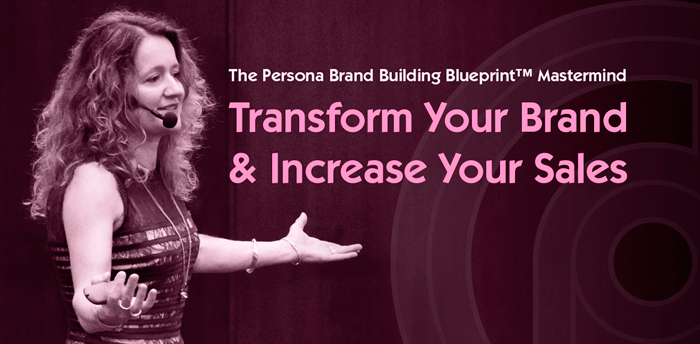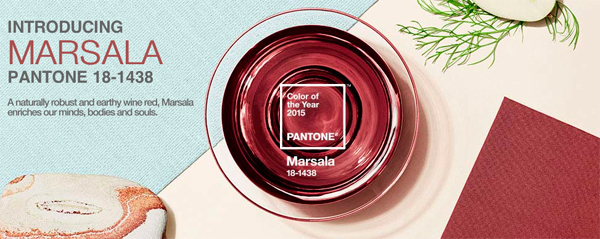Brand Audits: Why You Need Them and How to Perform One
From public transit advertising to shop displays, analysts believe we are exposed to up to 5,000 instances of branding exposure messages per day.[1]
That extreme saturation of the market place is why it’s so crucial to be aware of the health of your brand, and make changes if necessary. The first step in achieving that awareness comes through a brand audit health check.
Why Are Brand Audit Heath Checks Valuable?
A brand audit health check is an examination of the current state of your brand. Branding defines a company or product’s identity, both to internal and external stakeholders.
Examples of internal stakeholders include managers, employees, and board members. Suppliers, customers, community members and sponsors are possible external stakeholders. A brand audit health check helps determine how these stakeholders see your brand[2] and whether it’s necessary to make changes that would improve or clarify those perceptions.
Potential situations when it may be necessary to perform a brand audit include:
- Your brand’s market share is declining
- You are considering extending your brand to a new product category
- You are uncertain about the strength of your brand in relation to its competitive offerings
- You want to develop a more extensive overall branding plan
- You’re unaware of your brand’s weaknesses
Internal Versus External Brand Audits
An internal brand audit examines how staff members, managers and other members of the company brand perceive the brand. Conversely, an external audit usually looks at a segment of external stakeholders. When doing an external audit, you may want to consider researching both current customers and former customers, and members of the target audience who are currently loyal to other brands, but you’d like them to consider your brand instead.
Two and Five-Step Brand Audit Methodologies
The methodologies, extent, and depth of brand audits vary depending on your primary objectives, time, resources and other commercial imperatives.
However you’ll generally want to look at five key areas: [3]
- The Branding Strategy: This involves a careful examination of your company’s business and marketing plans, measured against what your brand is supposed to represent. During this phase, identify your company’s strengths and weaknesses, plus potential opportunities and threats. This practice is often referred to as a SWOT analysis. Furthermore, scrutinize future plans that support your brand.
- Branding Communications: Look at current and past advertising, PR activities, promotional materials, including your brand’s website[4] and social media profiles. Messages across all your brand platforms and customer touchpoints should be consistent, relevant, concise and clear, and most importantly tailored to meet the needs of your primary audience. If you find customers visit your website but don’t stick around, or that those visits never convert into profitable outcomes, it may be time to revitalize or rebrand your web presence. It’s also worthwhile to re-examine press releases, press kits, and employee training materials.
- How Customers Get to the Point of Choosing Your Brand: Do research to see which factors cause customers to shop for your brand and ultimately choose it over competitors. Re-evaluate your customer journey. While working with clients, we always remind them that understanding the customers’ processes can be extremely valuable. Customer feedback gained through surveys and focus groups could be a very useful resource.
- An In-Depth Customer Analysis: If your budget allows for it, a customer analysis should include both qualitative and quantitative studies. Find out how likely customers are to embrace your brand. There are numerous factors that contribute to brand loyalty, including attitude towards the brand, perception of the brand, and overall awareness.
- The Brand’s Position: Check to see how the brand is positioned in comparison to competitors. In many cases, this will mean collecting insight from stakeholders regarding their genuine and perceived beliefs about the brand. This evaluation should also include reviewing your brand’s personality and defining its purpose.
If for whatever reason you’re not able to perform a brand audit with more depth as indicated above, [5] it’s also possible to do a two-stage process that includes:
- Your Current Identity: Factors examined here should include your company’s brand name, slogan, brand collateral, personality and tone. In conducting this type of brand audit, you can often do valuable research amongst your primary audience by posing open-ended questions to your various stakeholders.
- Your Brand Strategy: Establishing whether your brand’s marketing efforts are worthwhile means looking at the level of brand awareness in your target demographic, examining what your competitors are doing well, and identifying their shortcomings, and evaluating data related to your website traffic and engagement, together with any other brand communication activities.
Deciding What to Do After a Brand Audit Health Check
The data collected from your auditing process can be extremely revealing. Findings will help determine whether a brand refresh is most appropriate, or a more radical overhaul with a complete rebranding. When working with clients, we often find they feel somewhat overwhelmed by all the results from their brand’s health check. However when all the key elements are broken down into smaller, more manageable chunks and each element is addressed systematically it is far more feasible compared to addressing the whole picture at one go!
Case Study: MadeSmart Housewares Refreshes Its Brand
For two decades, MadeSmart was a housewares brand that primarily provided private label offerings for licensing. When economic conditions changed, brand executives found MadeSmart did not have a sufficiently distinctive brand voice in the marketplace and was not strongly positioned enough for future growth.

Image via www.madesmart.com
The brand audit conducted for MadeSmart established that the brand was out of alignment with the marketplace, and the direction planned by the company. As part of the brand audit and brand profiling processes the brand was redefined, together with its promise and values, re-evaluated, re-positioned and updated to become more relevant to not only the marketplace and the brand’s primary target audience but also its future aspirations and growth plans.

Image via www.madesmart.com
MadeSmart’s brand identity in terms of their logo, advertising, signage, and website were some of the brand collateral that were redesigned following the brand audit too. The brand audit delivered positive growth with its branding refresh and received enthusiastic feedback from both clients and the local press. [6]

Image via www.madesmart.com
Case Study: Monsanto Seeks to Improve Brand Perception Among Staff Members
Monsanto, a multinational biotechnology company, felt it needed to encourage its staff to become more effective brand ambassadors whilst also enhancing their brand loyalty and engagement with company’s brand values. Monsanto hired a company to perform an internal brand audit, during which changes were suggested for the brand’s internal brand collateral, website design and visual identity, among other things. [7]

Image via www.monsanto.com
When the results of this work were evaluated via a survey, researchers found employees had a better perception of Monsanto, and were more likely to be loyal to the brand and consequently champion the brand. In short the strategies implemented after the brand audit were deemed very successful.
Key Takeaways:
- Brand audit health checks are very useful in identifying how internal and external stakeholders see your brand
- An important factor in a brand audit involves looking at your organization’s business plan to see if it aligns with perceptions of your brand and its messaging
- When examining the ways in which your brand’s messaging is communicated, be sure to evaluate both your online and offline presence
- Find out what triggers your customers to choose your brand over your competitors, and the likelihood of those customers fully embracing your brand. Also, examine how employees perceive your brand—is it aligned with the external market?
- The brand audit health check is the first step in evaluating whether you need to make changes in order to maintain or re-establish relevance in the marketplace
Questions to Consider:
- Has your brand experienced challenges that you think could have been avoided by performing a brand audit health check?
- What are some examples of key stakeholders you may have been overlooking in your day-to-day business operations?
- Have you received feedback that indicates your brand’s messaging is not as clear as it could be?
- Can you identify some systemized, yet easily applied, methodologies that could be used to get feedback from customers and employees alike, while also offering incentives to them?
- Are you able to recall at least one instance where a brand that’s familiar to you performed a complete rebranding process? Would you consider it to have been a successful venture?
You may also like:
• Brand Audit: Tips for Determining Your Brand’s Health – Can it be Improved?
• What Customers Want: Top 16 Branding Trends in 2016
• Colour in Brand Strategy: Colour Psychology and How it Influences Branding
• Creating New Brands: Top 10 Tips for Brand Success
• Brand Profiling: Top 6 Components to Creating a Strong Brand Personality
• Rebranding Strategy: Why Your Rebrand Must Embrace Storytelling
• Brand Differentiation: 30 Ways to Differentiate Your Brand
• Rebranding Strategy: Gems of Wisdom from 5 Successful Brand Revitalizations
• Brand Voice: Differentiating Through Your Own Brand Language and Attitude
• CEO Brand Leadership: How Does Your Leadership Impact Your Brand?
[1] Mike Huber, http://www.verticalmeasures.com/, “Why You Need a Content Marketing Budget for 2016”, September 2015
[2] http://www.bbc.co.uk/, “Business Studies: Stakeholders”
[3] Les Kollegian, http://www.entrepreneur.com/, “Do You Stand by Your Brand? It’s Time for an Audit”, January 2014
[4] Asmat Batul, https://blog.kissmetrics.com/, “How and Why You Should Conduct a Brand Audit”
[5] Brad VanAuken, http://www.brandingstrategyinsider.com, November 2007
[6] http://www.aiga.org/, “Case Study: MadeSmart Housewares Brand Refresh”, November 2011
[7] http://www.theaffiniti.com
























































